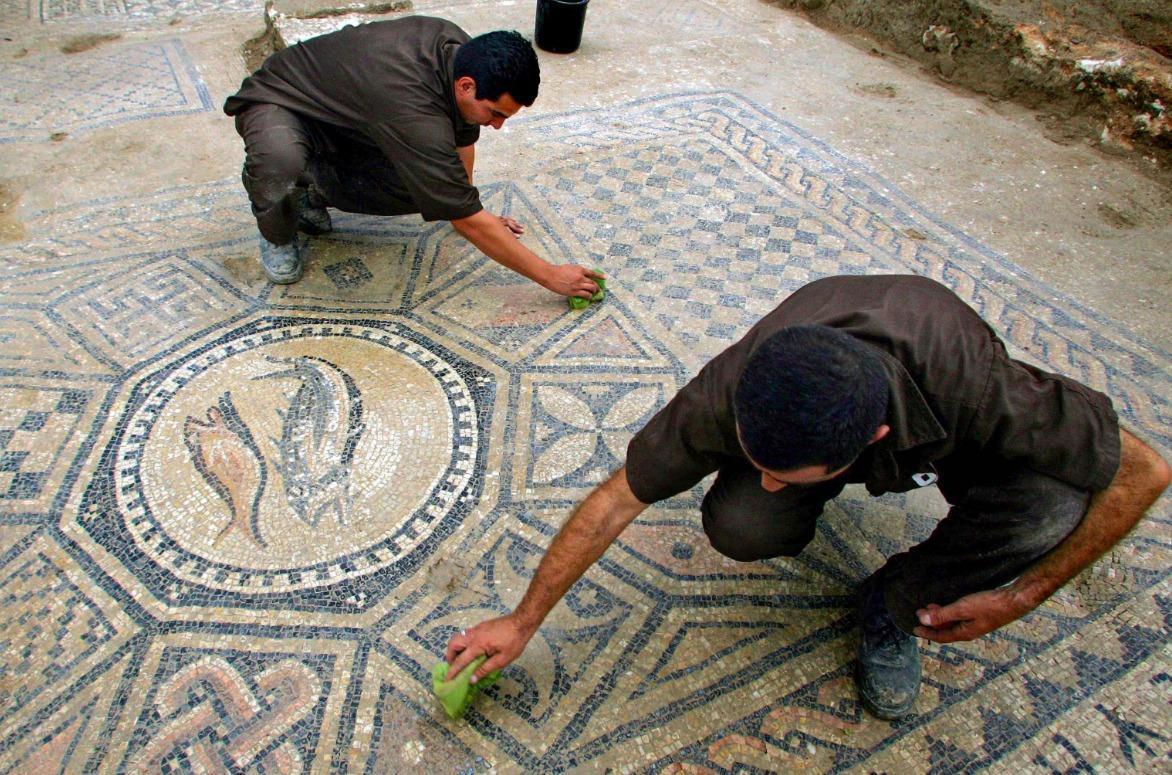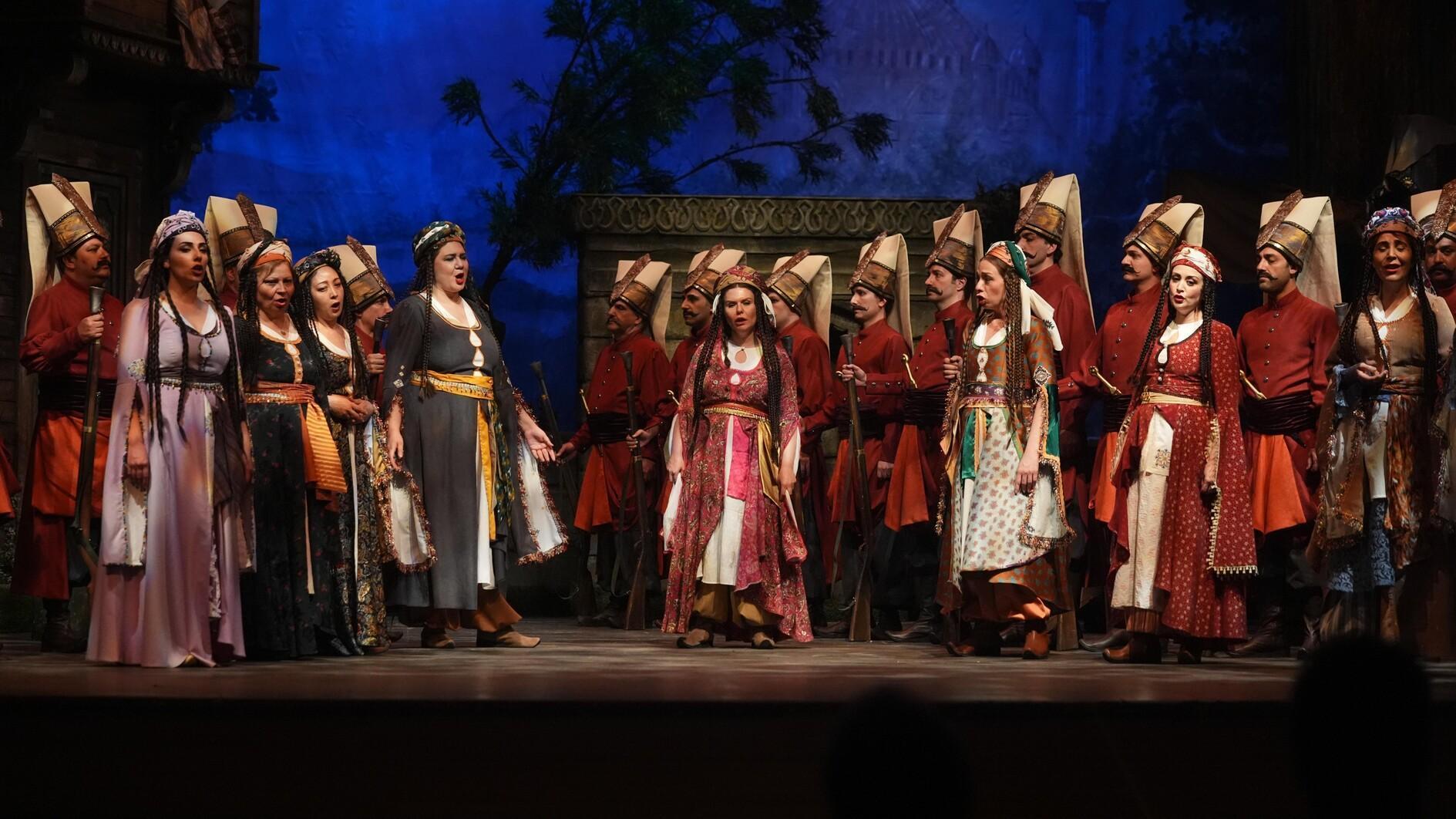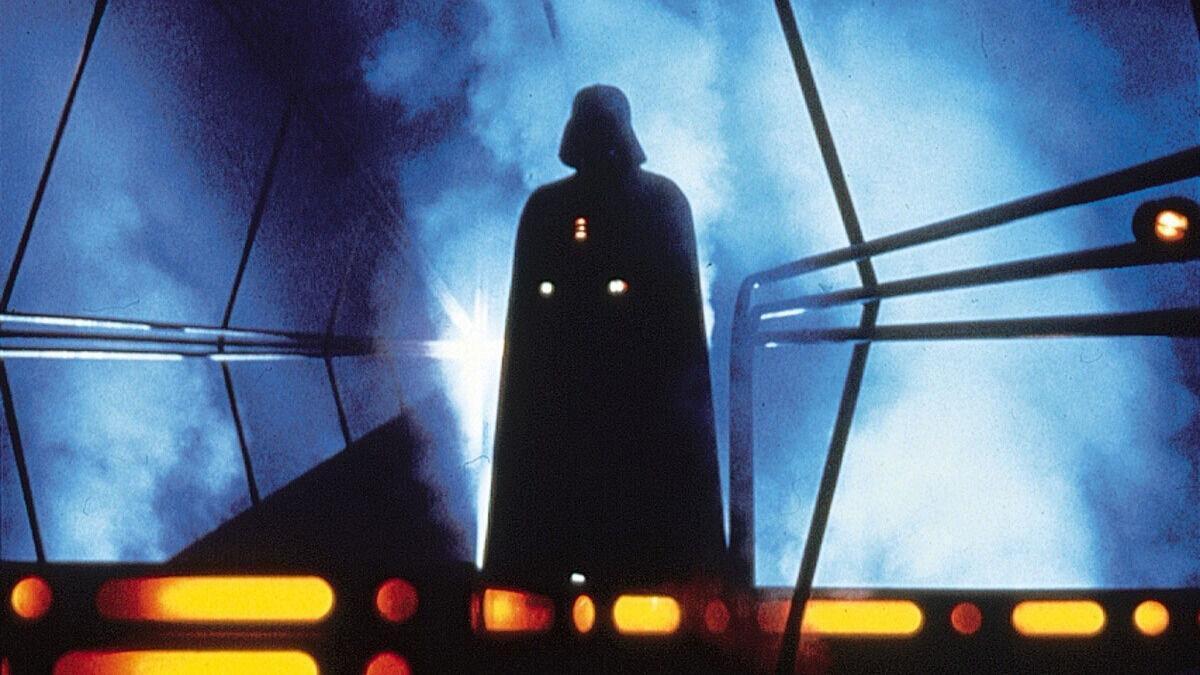Ancient Christian mosaic sparks outcry
TEL MEGIDDO

An ancient Christian mosaic bearing an early reference to Jesus as God is at the center of a controversy that has riled archaeologists: Should the centuries-old decorated floor, which is near what's believed to be the site of the prophesied Armageddon, be uprooted and loaned to a U.S. museum that has been criticized for past acquisition practices?
Israeli officials are considering just that. The proposed loan to the Museum of the Bible in Washington also underscores the deepening ties between Israel and evangelical Christians in the U.S, whom Israel has come to count on for political support, tourism dollars and other benefits.
The Megiddo Mosaic is from what is believed to be the world's earliest Christian prayer hall that was located in a Roman-era village in northern Israel. It was discovered by Israeli archaeologists in 2005 during a salvage excavation conducted as part of the planned expansion of an Israeli prison.
The prison sits at a historic crossroads a mile south of Tel Megiddo on the cusp of the wide, flat Jezreel Valley. Across a field strewn with cow-dung and potsherds, the palm-crowned site of a Bronze and Iron Age city and ancient battles is where some Christians believe a conclusive battle between good and evil will transpire at the end of days: Armageddon.
The Israel Antiquities Authority said that it will decide about the move in the coming weeks, following consultations with an advisory body.
“There’s an entire process that academics and archaeologists are involved with,” said IAA director Eli Eskozido. The organization said that moving the mosaic from its original location was the best way to protect it from upcoming construction at the prison.
Jeffrey Kloha, the Museum of the Bible’s chief curatorial officer, said a decision on the loan would be made solely by the IAA.
The museum “of course would welcome the opportunity to educate our thousands of visitors on important pieces of history such as this mosaic,” he told The Associated Press via email.
Several archaeologists and academics have voiced vociferous objections to the notion of removing the Megiddo Mosaic from where it was found - and all the more so to exhibit it at the Museum of the Bible.
Cavan Concannon, a religion professor at the University of Southern California, said the museum acts as a “right-wing Christian nationalist Bible machine” with links to “other institutions that promote white evangelical, Christian nationalism, Christian Zionist forms.”
“My worry is that this mosaic will lose its actual historical context and be given an ideological context that continues to help the museum tell its story,” he said.
Others balk at the thought of moving the mosaic at all before academic study is complete.
“It is seriously premature to move that mosaic," said Matthew Adams, director of the Center for the Mediterranean World, an non-profit archaeological research institute, who is involved in digs at Tel Megiddo and the abutting Roman legionary camp of Legio.
Asked about criticisms of the Washington museum’s practices, Kloha said, “Major museums and distinguished institutions committed to preserving history have had to grapple with cultural heritage issues, particularly in recent years.”
“To be clear: Museum of the Bible is proud to have proactively launched research and a thorough review of items in its collections,” he added. “The museum initiated returns where appropriate to countries of origin without obligation to do so and encourages other institutions to do the same.”
Based on other finds found in the dig and the style of the letters in the inscriptions, IAA archaeologists have dated the mosaic floor to the third century before the Roman Empire officially converted to Christianity and when adherents were still persecuted. Nonetheless, one of the donors who paid to decorate the ancient house of worship was a centurion serving in the adjacent Roman legionary camp.
The mosaic bears Greek inscriptions, among them an offering “To God Jesus Christ.”
Since opening its doors in 2017, the Museum of the Bible has faced criticism over its collecting practices and for promoting an evangelical Christian political agenda. In 2018, it had to repatriate an ancient Mesopotamian tablet looted from Iraq and admit that several of the Dead Sea Scroll fragments in its collection were modern forgeries. American authorities also seized thousands of clay tablets and other looted antiquities from the museum’s founder, Hobby Lobby president and evangelical Christian Steve Green, and returned them to Iraq.
The mosaic loan would reinforce ties between Israel and the museum. The museum sponsors two archaeological digs in Israel, has a gallery curated by the IAA. Kloha said the museum also is planning a lecture series featuring IAA archaeologists.
















